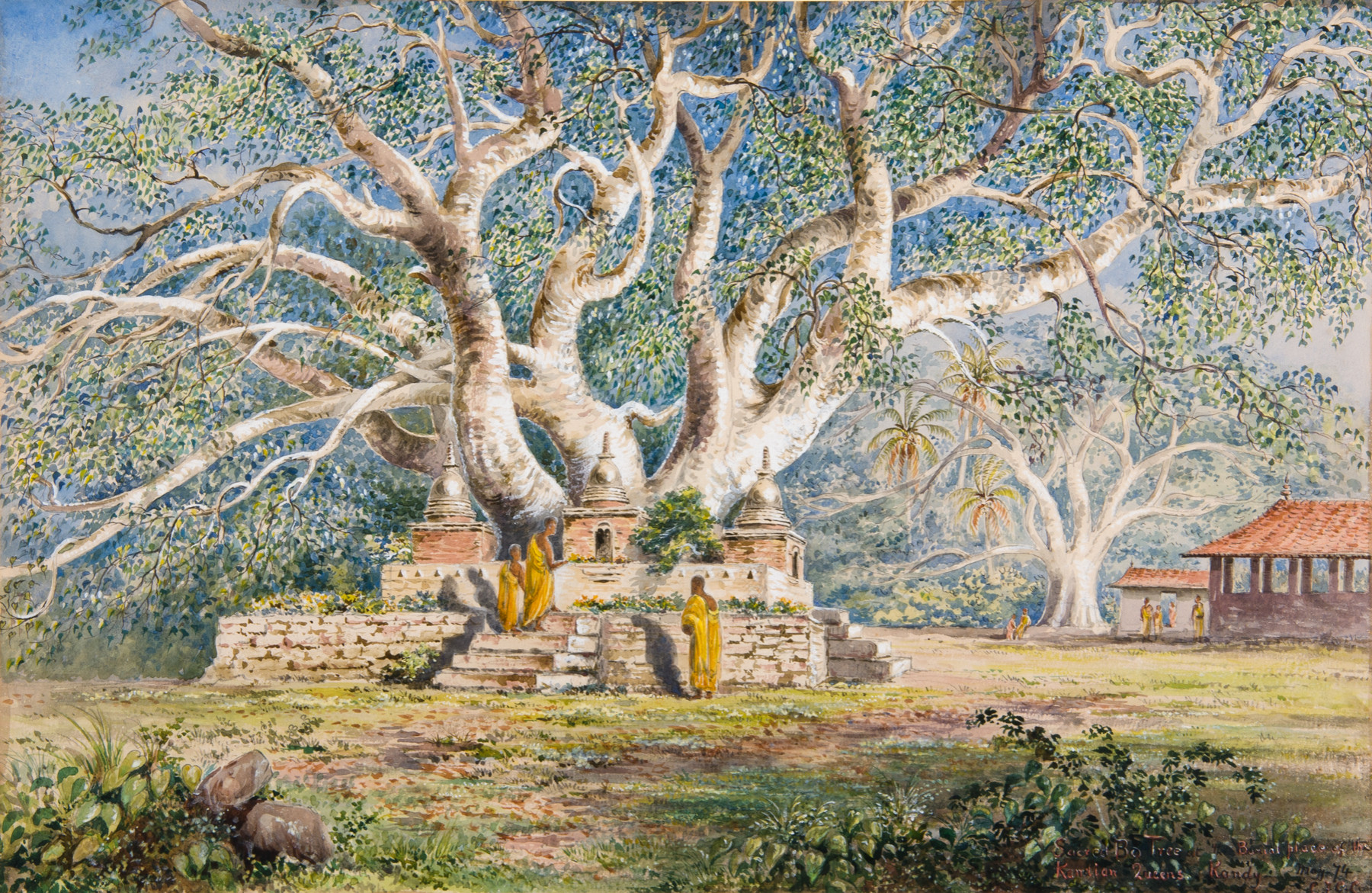
(click image to enlarge)
Constance Frederica Gordon-Cumming is likely to have arrived in Kandy in late April or early May 1874, having spent a week with Bishop Hugh Jermyn at Pallagolla, before taking a coach to Gampola and onwards by rail. She described Kandy as ‘a beautifully situated little town’ where ‘the vegetation of the hills meets that of the plains, and all the lovely varieties of foliage peculiar to each mingle in rank luxuriance’ (Two Happy Years in Ceylon, 1892, page 243).
The Burial Place referenced here is the Asgiri Maha Viharaya, one of two fourteenth-century Buddhist monasteries in Kandy, which contain in their grounds the Sri Dalada Maligawa, or Temple of the Tooth, which houses a sacred relic said to be a tooth of the Buddha. The Asgiri had served as a royal crematorium and burial ground since the late fourteenth century, a tradition that started when Queen Chandravati, mother of the Kandyan King Sena Sammatha Vikramabahu, was cremated and buried there. However, in 1880, the royal burial ground and funerary dagobas were destroyed by the British to make way for a railway line to Matale.
The Bo Tree, or Bodhi Tree, is a species of fig tree considered sacred in the Buddhist religion. It is believed that the Buddha achieved spiritual enlightenment while sitting beneath such a tree in Bodh Gaya, India. A part of this tree was later transported to Ceylon and planted at Anuradhapura in 288 BC. This tree still lives today, making it the oldest living human-planted tree in the world with a known planting date. It is referenced in the annotations to The Brazen Palace, another of Gordon-Cumming's Sri Lankan drawings. The Bo Tree depicted here, as with all sacred Bo Trees in Ceylon, was said to have been grown from a part of the ancient tree from Anuradhapura. Within the enclosure that surrounds the tree, Gordon-Cumming notes that ‘the priests or their attendants have kept tame cobras’, remarking that ‘these gentle pets are fed at regular hours, and it is suspected that the protection afforded them is not unmingled with some feeling of reverence’ (op cit, page 413).